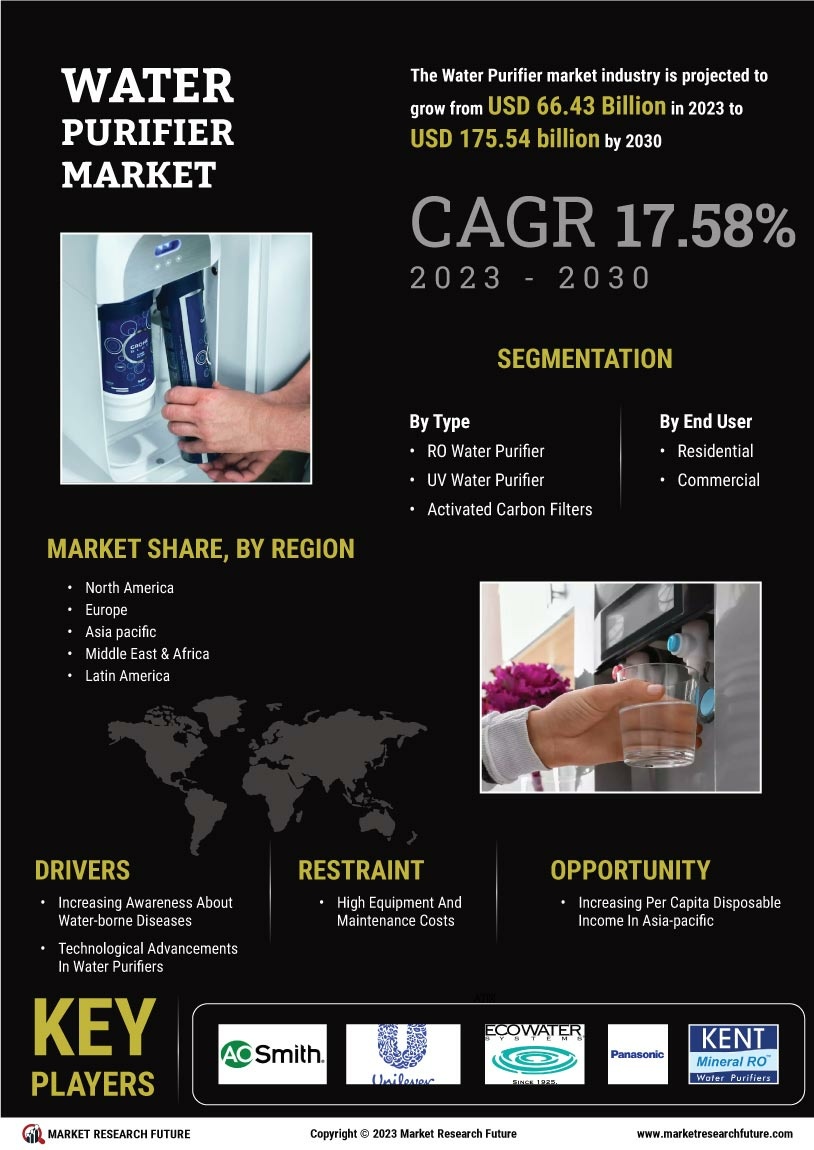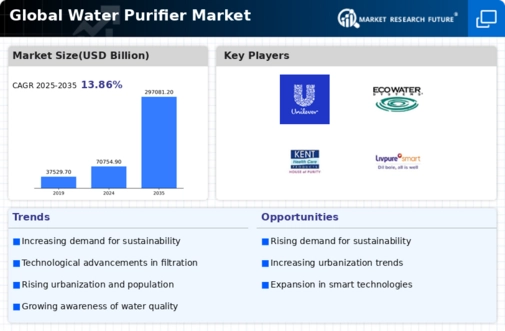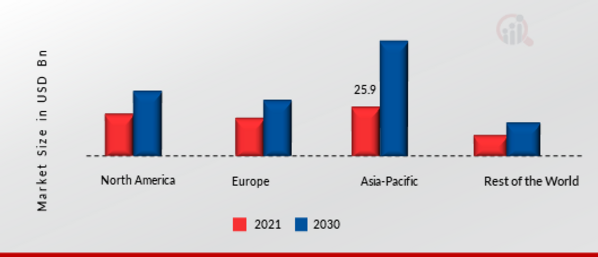Rising Disposable Income
Rising disposable income levels across various demographics are contributing to the expansion of the Global Water Purifier Market Industry. As consumers gain more financial flexibility, they are increasingly willing to invest in high-quality water purification systems. This trend is particularly evident in emerging economies, where a growing middle class prioritizes health and wellness. The willingness to spend on advanced purification technologies is expected to drive market growth significantly. With a projected CAGR of 13.93% from 2025 to 2035, the industry is poised for substantial expansion, reflecting changing consumer priorities and economic conditions.
Increasing Water Scarcity
The Global Water Purifier Market Industry is experiencing a surge in demand due to increasing water scarcity across various regions. As populations grow and urbanization accelerates, the availability of clean drinking water diminishes. For instance, regions like sub-Saharan Africa and parts of Asia face severe water shortages, prompting a shift towards water purification solutions. This trend is reflected in the market's projected growth, with the industry expected to reach 70754.9 USD Billion in 2024 and potentially 297081.2 USD Billion by 2035. The urgency to address water scarcity issues drives consumers and governments alike to invest in water purification technologies.
Market Growth Projections
The Global Water Purifier Market Industry is poised for remarkable growth, with projections indicating a market size of 70754.9 USD Billion in 2024 and an anticipated increase to 297081.2 USD Billion by 2035. This growth trajectory suggests a robust demand for water purification solutions driven by various factors, including health awareness, technological advancements, and government initiatives. The projected CAGR of 13.93% from 2025 to 2035 underscores the industry's potential for expansion. This upward trend in market size reflects the increasing recognition of the importance of clean drinking water and the necessity for effective purification systems.
Technological Advancements
Technological advancements play a pivotal role in shaping the Global Water Purifier Market Industry. Innovations in filtration technologies, such as reverse osmosis and UV purification, enhance the efficiency and effectiveness of water purifiers. These advancements not only improve the quality of purified water but also make systems more user-friendly and accessible. As a result, consumers are increasingly adopting modern purification solutions, driving market growth. The integration of smart technologies, such as IoT-enabled purifiers, further enhances consumer engagement and satisfaction. This trend is expected to propel the market towards a valuation of 70754.9 USD Billion in 2024, with continued growth anticipated in the coming years.
Health Awareness and Safety Concerns
The Global Water Purifier Market Industry is significantly influenced by heightened health awareness and safety concerns among consumers. As individuals become increasingly cognizant of the potential contaminants in tap water, the demand for effective purification systems rises. Reports indicate that consumers are more inclined to purchase water purifiers that ensure the removal of harmful substances, such as lead and bacteria. This shift in consumer behavior is likely to contribute to the industry's robust growth, with a projected CAGR of 13.93% from 2025 to 2035. The focus on health and safety is reshaping the market landscape, encouraging innovation in purification technologies.
Government Initiatives and Regulations
Government initiatives and regulations aimed at ensuring safe drinking water significantly impact the Global Water Purifier Market Industry. Many governments are implementing stringent regulations regarding water quality, compelling households and businesses to invest in purification systems. For instance, initiatives promoting the use of water purifiers in rural areas are gaining traction, as they aim to reduce waterborne diseases. These regulatory frameworks not only enhance public health but also stimulate market demand. As the industry evolves, it is likely to witness substantial growth, with projections indicating a market size of 297081.2 USD Billion by 2035, driven by supportive government policies.






